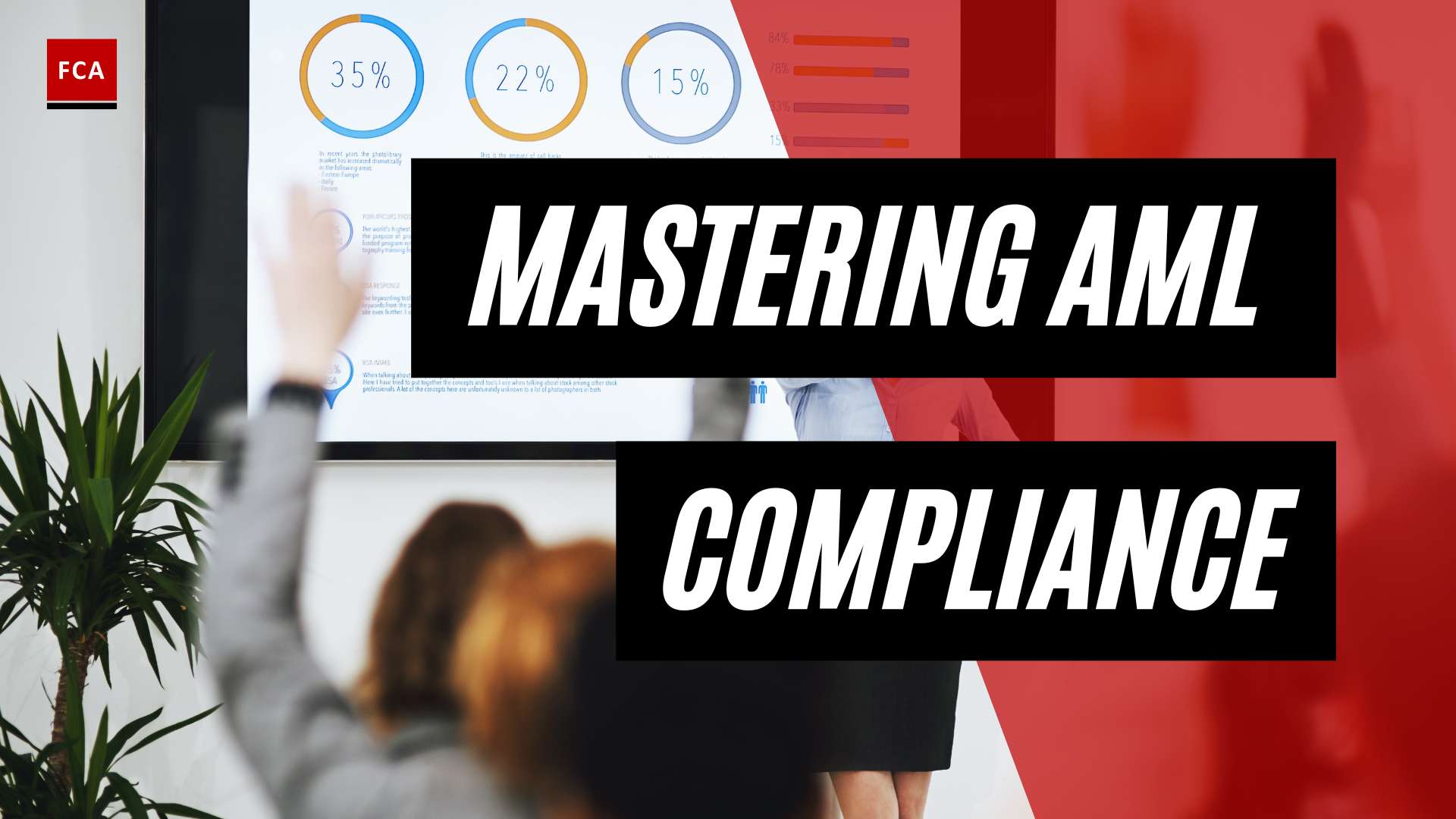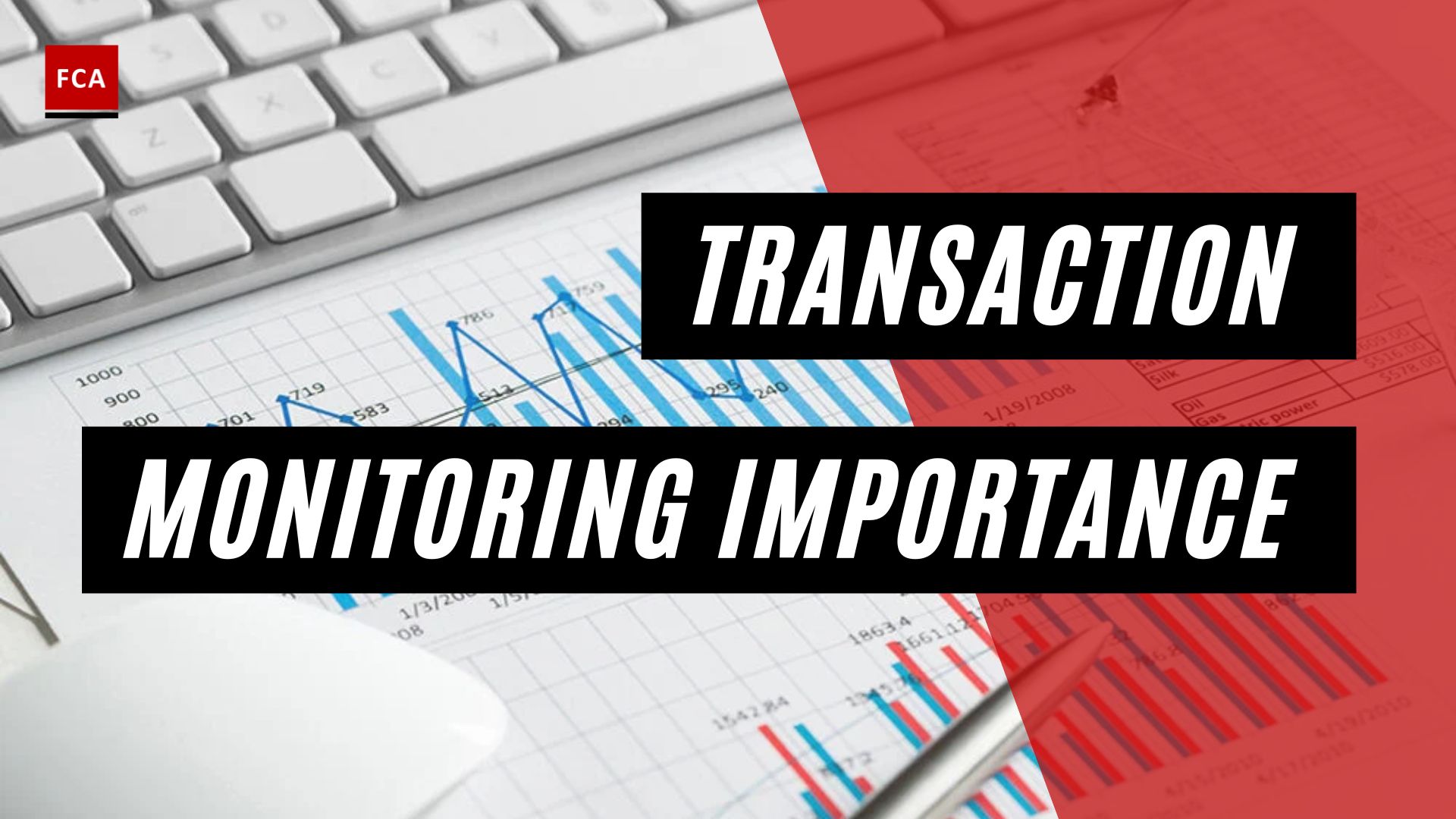Understanding Money Laundering in the Banking Sector
Money laundering is a complex process that involves disguising the illicit origins of funds to make them appear legitimate. In the banking sector, where large amounts of money flow daily, money laundering poses a significant threat. By understanding the basics of money laundering and the role of the banking sector in facilitating it, we can better comprehend the challenges faced in combating this criminal activity.
Introduction to Money Laundering
Money laundering refers to the process of making illegally obtained funds appear legal by passing them through a series of transactions or activities. The goal is to obscure the source, ownership, or control of the funds, making it difficult for authorities to trace them back to their illegal origin. Money laundering allows criminals to enjoy the proceeds of their illicit activities without arousing suspicion.
To accomplish this, money launderers typically follow a three-stage process: placement, layering, and integration. During the placement stage, illicit funds are introduced into the financial system. In the layering stage, the funds are moved through a complex web of transactions to create confusion and make it challenging to trace their origin. Finally, in the integration stage, the laundered funds are merged back into the legitimate economy, appearing as legitimate assets.
Role of the Banking Sector in Money Laundering
The banking sector plays a crucial role in money laundering schemes, both wittingly and unwittingly. Financial institutions provide a range of services that can be exploited by money launderers. The use of banks allows criminals to legitimize their funds, integrate them into the formal financial system, and enjoy the benefits of seemingly legitimate wealth.
One common technique used by money launderers is the establishment of shell companies. These are legal entities that often hide the ultimate beneficial owner (UBO) from investigators. Shell companies can be used to create a dead-end in the money trail during the layering stage of money laundering. Jurisdictions with strict privacy laws, such as the British Virgin Islands, the Cayman Islands, and certain US states like Wyoming, are known as hotspots for shell companies and money laundering.
Cash-based businesses also serve as fronts for money laundering activities. Criminals may use legitimate businesses, such as casinos or restaurants, to commingle illicit funds with legitimate revenues, making it difficult to distinguish between the two. Underground banking systems, often known as hawala or hundi, also play a role in money laundering by facilitating the transfer of funds outside the regulated financial system.
Furthermore, real estate transactions can be exploited for money laundering purposes. Criminals may purchase properties using illicit funds, and then sell or rent them to further legitimize the proceeds. The anonymity and potential for substantial financial transactions in the real estate market make it an attractive avenue for money laundering.
The banking sector is aware of these money laundering risks and is subject to regulatory frameworks and anti-money laundering (AML) measures to prevent illicit activities. These measures include Know Your Customer (KYC) procedures, transaction monitoring, and reporting suspicious activities to the relevant authorities. Governments and international organizations, such as the Financial Action Task Force (FATF), have established standards and regulations to guide AML efforts globally.
Understanding the techniques employed by money launderers in the banking sector is crucial for developing effective AML strategies and safeguarding the integrity of the financial system. By staying vigilant and implementing robust regulatory measures, banks can play a vital role in preventing and detecting money laundering activities.
Money Laundering Techniques in the Banking Sector
Money laundering is a complex process that involves disguising the illicit origins of money to make it appear legitimate. The banking sector plays a significant role in facilitating money laundering activities. In this section, we will explore some common money laundering techniques used in the banking sector.
Shell Companies and Money Laundering
Shell companies are entities that exist only on paper and lack significant operations or assets. They are frequently used in the three classic stages of money laundering: placement, layering, and integration. Placement involves introducing illicit funds into the financial system, layering obscures the origins of the money through complex financial transactions, and integration integrates the “cleaned” money into the legitimate economy.
Shell companies are often used in trade-based money laundering, where trade transactions are manipulated to disguise the movement of money. Their structure and anonymity make them ideal for moving funds through the financial system without attracting attention (FlagRight). Criminals exploit the use of shell companies to conceal assets through the purchase of real estate, opening bank accounts, and acquiring valuable goods. These assets are owned by the shell company on paper, making it difficult to attribute them to the actual beneficial owner.
Cash-Based Businesses as Fronts
Cash-based businesses, such as restaurants, retail stores, and casinos, can be used as fronts for money laundering. Criminals may use these businesses to commingle illicit funds with legitimate business revenue, making it challenging to trace the illicit origins of the money. By manipulating cash transactions, criminals can obscure the source of the funds and integrate them into the legitimate economy.
Underground Banking Systems
Underground banking systems, also known as informal value transfer systems or hawalas, are alternative remittance networks that operate outside the traditional banking system. These systems facilitate the transfer of funds without leaving a clear financial trail. Criminals exploit underground banking systems to move money across borders, bypassing regulatory scrutiny and international reporting requirements. The lack of transparency and oversight in these systems makes them attractive for money laundering purposes.
Bulk Cash Smuggling
Bulk cash smuggling involves physically transporting large amounts of cash across borders to evade detection. Criminals may conceal the cash in various ways, such as hidden compartments, false-bottomed suitcases, or even within legitimate goods. By smuggling cash across borders, criminals can bypass reporting requirements and move illicit funds into the financial system without raising suspicion.
Real Estate Transactions
Real estate transactions can be exploited for money laundering purposes. Criminals may use illicit funds to purchase properties, either directly or through shell companies, in an attempt to legitimize their wealth. Real estate offers an attractive avenue for money laundering due to the potential for capital appreciation and the ability to generate rental income. The use of complex ownership structures and the lack of transparency in real estate transactions make it challenging to trace the origins of the funds.
Exploiting the Gambling Industry
The gambling industry is susceptible to money laundering due to the large volumes of cash involved and the potential for anonymity. Criminals may convert illicit funds into casino chips or electronic balances, gamble for a short period, and then cash out the funds. This process allows them to introduce illicit funds into the legitimate financial system. Additionally, criminals collaborate to intentionally lose gambling proceeds, offer illegitimate gambling winnings to other players, or exchange dirty money for legitimate gambling earnings. The complexity of gambling transactions and the ability to convert funds into a legitimate form make it an attractive avenue for money laundering (Basel Governance).
By understanding these money laundering techniques used in the banking sector, financial institutions and regulatory authorities can enhance their anti-money laundering measures to detect and prevent illicit activities. Implementing robust Know Your Customer (KYC) procedures, transaction monitoring systems, and regulatory compliance can help mitigate the risks associated with money laundering in the banking sector.
Regulatory Framework and Anti-Money Laundering Measures
To combat the pervasive issue of money laundering, the banking sector operates under a robust regulatory framework and anti-money laundering (AML) measures. These regulations aim to detect, prevent, and deter illicit financial activities. In this section, we will explore some key components of the regulatory framework and AML measures.
AML Regulations and Global Watchlists
Financial institutions are required to adhere to AML regulations that help identify and mitigate the risk of money laundering. A crucial aspect of these regulations is the screening of potential customers against global watchlists, sanction lists, and politically exposed person (PEP) lists. This screening process ensures that financial institutions are aware of any potential risks associated with their customers, enabling them to take appropriate measures to prevent money laundering (Unit21 Blog).
These watchlists cover various industries, including banking, fintech, stock markets, real estate, art, precious metals, cryptocurrency dealers, and gaming platforms. By cross-referencing customer information against these watchlists, financial institutions can identify individuals or entities with known connections to money laundering activities.
Financial Action Task Force (FATF) Standards
The Financial Action Task Force (FATF) plays a crucial role in setting international standards and promoting effective AML measures. Established in 1989, the FATF helps nations develop their own AML and counter-terrorism financing policies by providing best practices and standards to combat financial crimes. The FATF’s 40 Recommendations serve as a benchmark for countries to assess the effectiveness of their AML efforts and implement necessary improvements.
By providing guidance and fostering collaboration among member countries, the FATF enhances the global fight against money laundering. Its standards cover various aspects, including customer due diligence, record keeping, suspicious transaction reporting, and international cooperation. Compliance with FATF standards is crucial for countries to maintain transparency and integrity in their financial systems.
AML Regulations in the United States
In the United States, multiple regulatory bodies oversee AML efforts to ensure compliance with AML laws. These include the Financial Crimes Enforcement Network (FinCEN), Financial Industry Regulatory Authority (FINRA), Office of Foreign Assets Control (OFAC), Federal Trade Commission (FTC), Consumer Financial Protection Bureau (CFPB), U.S. Securities and Exchange Commission (SEC), and Commodity Futures Trading Commission (CFTC), among others (Unit21 Blog).
FinCEN, in particular, enforces the Bank Secrecy Act (BSA) and the USA PATRIOT Act to combat money laundering and terrorist financing activities. It requires financial institutions to implement robust AML programs, conduct customer due diligence, report suspicious transactions, and maintain comprehensive records (Dow Jones).
Regulatory authorities in the United States work collaboratively to ensure the integrity of the financial system and protect it from the risks associated with money laundering. By imposing reporting and record-keeping requirements on financial institutions, they contribute to the prevention of illicit financial transactions and the detection of potential money laundering activities.
Understanding the regulatory framework and AML measures is essential for financial institutions to fulfill their obligations in the fight against money laundering. By complying with these regulations and adopting effective AML practices, the banking sector can play a pivotal role in safeguarding the integrity of the global financial system.
Technological Advancements in Anti-Money Laundering
As the fight against money laundering continues, advancements in technology have played a significant role in enhancing the capabilities of financial institutions to detect and prevent illicit financial activities. In this section, we will explore three key technological advancements in the field of anti-money laundering: the role of big data, machine learning, and AI; digital customer solutions and electronic Know Your Customer (eKYC); and the impact of cryptocurrencies on money laundering.
Role of Big Data, Machine Learning, and AI
Big data, machine learning, and artificial intelligence (AI) have revolutionized the fight against financial crimes, including money laundering. These technologies enable financial institutions to analyze vast amounts of data to identify anomalies and suspicious activities more efficiently and cost-effectively (Sanction Scanner). By utilizing machine learning algorithms, these systems can learn from patterns and trends in data to detect potential money laundering activities that may go unnoticed by traditional rule-based systems.
With the help of big data analytics, financial institutions can now monitor and analyze customer transactions in real-time, allowing for the prompt identification of suspicious activities. This proactive approach enables institutions to take immediate action to prevent money laundering before it escalates.
Digital Customer Solutions and eKYC
Digital customer solutions, such as electronic Know Your Customer (eKYC) processes, have become essential tools in enhancing Customer Due Diligence (CDD) procedures and combating money laundering (Sanction Scanner). These solutions leverage machine learning algorithms to verify and authenticate customer identities through automated processes, reducing the risk of fraud and identity theft.
eKYC procedures allow financial institutions to gather necessary customer information digitally, eliminating the need for manual paperwork and reducing the time required for customer onboarding. By automating these processes, institutions can ensure compliance with regulatory requirements while minimizing the risk of money laundering.
Impact of Cryptocurrencies on Money Laundering
The rise of cryptocurrencies, such as Bitcoin, has presented new challenges in the fight against money laundering. Criminals and terrorist organizations have exploited the pseudonymous nature of cryptocurrency transactions, making it difficult for law enforcement agencies to trace the movement of funds. In 2019, it was observed that the amount of illicit funds laundered through bitcoin exchanges increased to $2.8 billion compared to $1 billion the previous year (Sanction Scanner).
To address this challenge, regulators have recognized the need to implement new rules and regulations to prevent the misuse of cryptocurrencies for illicit purposes (IntechOpen). Financial institutions and cryptocurrency exchanges are now required to adhere to strict compliance measures, such as implementing robust Know Your Customer (KYC) processes and transaction monitoring systems, to mitigate the risk of money laundering through cryptocurrencies.
By leveraging technological advancements and staying updated with the latest tools and regulations, financial institutions can enhance their anti-money laundering capabilities. However, it is important to continuously adapt and evolve these technologies to stay ahead of ever-changing money laundering techniques and protect the integrity of the global financial system.
Consequences and Global Efforts to Combat Money Laundering
The fight against money laundering is a global endeavor that involves both regulatory bodies and financial institutions. To deter and prevent money laundering activities, there are significant consequences in place for those involved in illicit financial transactions. Additionally, various global initiatives and regulations have been established to combat this criminal practice. Let’s explore the consequences and global efforts in more detail.
Fines, Penalties, and Criminal Charges
Failing to comply with anti-money laundering (AML) regulations can result in severe consequences for individuals and organizations involved in money laundering schemes. It is not uncommon for authorities to impose substantial fines and penalties on those found guilty of facilitating or participating in money laundering activities. These penalties serve as a deterrent and are intended to protect organizations from the risks associated with money laundering (Unit21 Blog).
In addition to financial penalties, criminal charges can be filed against individuals involved in money laundering. These charges can lead to imprisonment and further damage to one’s personal and professional reputation. The severity of the consequences depends on the jurisdiction and the extent of the money laundering scheme.
Global Initiatives and Regulations
To address the global nature of money laundering, various initiatives and regulations have been established to promote cooperation between countries and financial institutions. One prominent organization in this regard is the Financial Action Task Force (FATF). The FATF is an intergovernmental organization that focuses on combating money laundering and terrorist financing activities worldwide. It sets international standards and provides guidance to countries and financial institutions on implementing effective AML measures (Dow Jones).
Countries around the world have adopted the FATF’s recommendations as the basis for their own AML regulations. These recommendations cover areas such as customer due diligence, reporting suspicious transactions, and international cooperation. By adopting these standards, countries can align their efforts and ensure a coordinated approach to combating money laundering.
Wolfsberg Group and International Standards
The Wolfsberg Group is another significant player in the global fight against money laundering. Comprising major international banks, the Wolfsberg Group aims to develop financial industry standards for AML practices. It has issued various guidance notes and principles to promote consistent practices and due diligence measures across financial institutions worldwide.
By adhering to the Wolfsberg Group’s guidelines, banks and financial institutions can enhance their AML frameworks and strengthen their efforts to detect and prevent money laundering. These guidelines cover a range of topics, including risk assessments, customer due diligence, and information sharing.
The collaboration between regulatory bodies, international organizations, and financial institutions is crucial in the ongoing battle against money laundering. Through the imposition of fines, penalties, and criminal charges, as well as the establishment of global initiatives and adherence to international standards, efforts are being made to deter money laundering activities and safeguard the integrity of the financial system.








